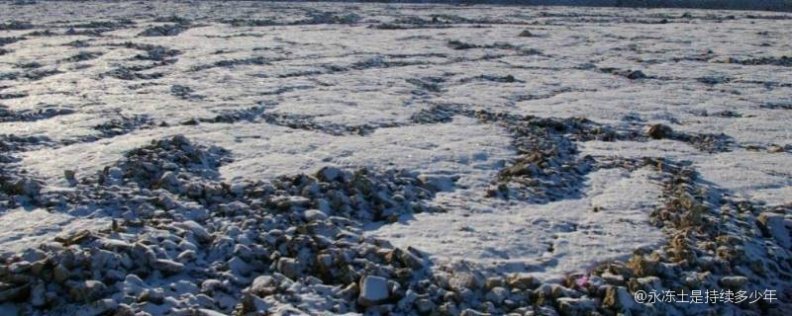永冻土是持续多少年,请问冻土是指在0度以下持
永冻土是持续多少年,请问冻土是指在0度以下持续多少年?
据和记百科网站「青栀如初」消息,近日,永冻土是持续多少年,请问冻土是指在0度以下持续多少年?引发热议,冻土是指在0度以下持续多少年同样引起许多争议,对此众网友各抒己见。但到底是怎么回事呢?和记百科为您解答。
永冻土是持续多少年

三年或三年以上。永冻层又称永久冻土或多年冻土层,是指的是持续三年或三年以上的冻结不融的土层。可分为上下两层:上层每年夏季融化,冬季冻结,称活动层,又称冰融层;下层常年处在冻结状态,称永冻层或多年冻层。
永冻层又称永久冻土或多年冻土层,是指的是持续三年或三年以上的冻结不融的土层。可分为上下两层:上层每年夏季融化,冬季冻结,称活动层,又称冰融层;下层常年处在冻结状态,称永冻层或多年冻层。冻土层的厚度从高纬到低纬逐渐减薄,以至完全消失。
例如,北极的多年冻土厚达千米以上,年平均低温为-15℃。永冻层的顶面接近地面。向南,趋近连续冻土的南界,多年冻土厚度减到100m以下,低温为-5~-3℃,永冻层的顶面埋藏变深。大致北纬48°附近是多年冻土的南界,其处平均低温接近0℃,冻土厚度仅1~2m。超过这一界限,就从连续冻土带过渡到不连续冻土带。后者由许多分散的冻土块体组成,这种分散的冻土块体称为岛状冻土块。
冻土是指在0度以下持续多少年
什么是冻土?
冻土是指永久冻结或时间跨度较长、季节性冻结融化交替的地面和岩体。一般来说,冻土指在0℃以下持续多年的土层或岩层。
为什么会形成冻土?
冻土是寒冷气候下,土壤或者岩石对温度变化的响应。在地球表面,地表土壤受到太阳辐射的照射,会吸收大量的热能,然后传导到地下,对地下岩石和土壤进行加热,如果夏季太阳能够传导到足够深的地方,那么冬季的温度也不会低于0℃,那么就不形成冻土,反之就会出现。
冻土对我们有什么影响?
冻土在自然环境和人类活动中起着重要的作用,尤其在高寒地区,冻土就如同一块坚实的地基一般,能够支撑起建筑物和道路,而且由于这些地区的生长季较短,农业和畜牧业用地一般越来越依赖冻土,由于冻土的融化速率不断加快,导致土地退化,影响社会经济发展和生态环境。
如何保护冻土资源?
对于保护冻土资源,我们需要采取综合措施,主要是限制挖掘,合理利用,加强监管。特别是要加强冻土生态环境保护,限制对冻土地区的人口和产业的发展,以控制人类活动对冻土的破坏和影响。
冻土在全球气候变化方面有何影响?
随着全球气候变暖,冻土快速融化的现象越来越普遍,这对于全球气候变化的影响不容小觑,融化的冻土将释放出巨量的碳、甲烷等温室气体,进一步加重全球气候变化的风险。所以,我们应该重视冻土资源的保护,尽量减缓人类活动对冻土的影响,减缓全球气候变化的趋势。
【英文介绍/For English】:
three years or more. Permafrost, also known as permafrost or permafrost, refers to the layer of frozen soil that lasts for three years or more. It can be divided into upper and lower layers: the upper layer melts every summer and freezes in winter, called the active layer, also known as the melting ice layer; the lower layer is in a frozen state all the year round, called the permafrost or permafrost.
Permafrost, also known as permafrost or permafrost, refers to the layer of frozen soil that lasts for three years or more. It can be divided into upper and lower layers: the upper layer melts every summer and freezes in winter, called the active layer, also known as the melting ice layer; the lower layer is in a frozen state all the year round, called the permafrost or permafrost. The thickness of the permafrost gradually decreases from high latitude to low latitude, and even disappears completely.
For example, the permafrost in the Arctic is more than a kilometer thick, and the average annual low temperature is -15 °C. The top surface of the permafrost is close to the ground. To the south, approaching the southern boundary of the continuous permafrost, the thickness of the permafrost is reduced to less than 100m, the low temperature is -5 to -3°C, and the top surface of the permafrost is buried deeper. Roughly 48° north latitude is the southern boundary of permafrost, where the average low temperature is close to 0°C, and the thickness of the frozen soil is only 1-2m. Beyond this limit, there is a transition from continuous permafrost to discontinuous permafrost. The latter consists of many scattered frozen soil blocks, which are called island frozen soil blocks.
【相关文章】






